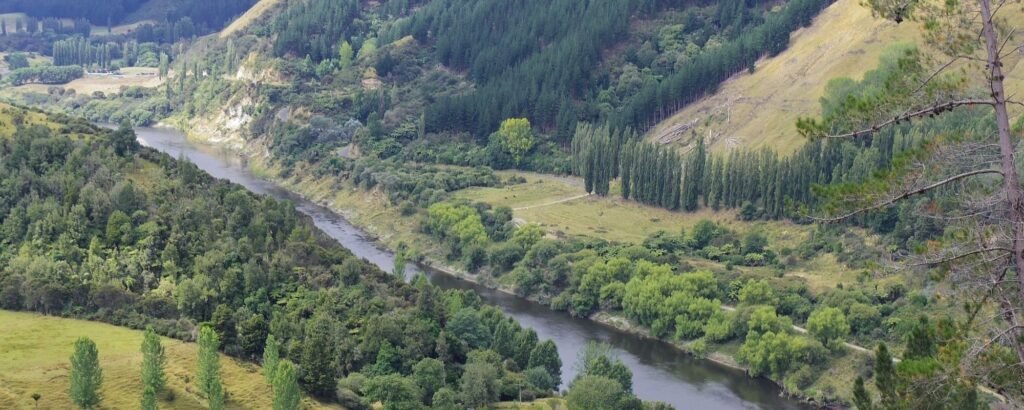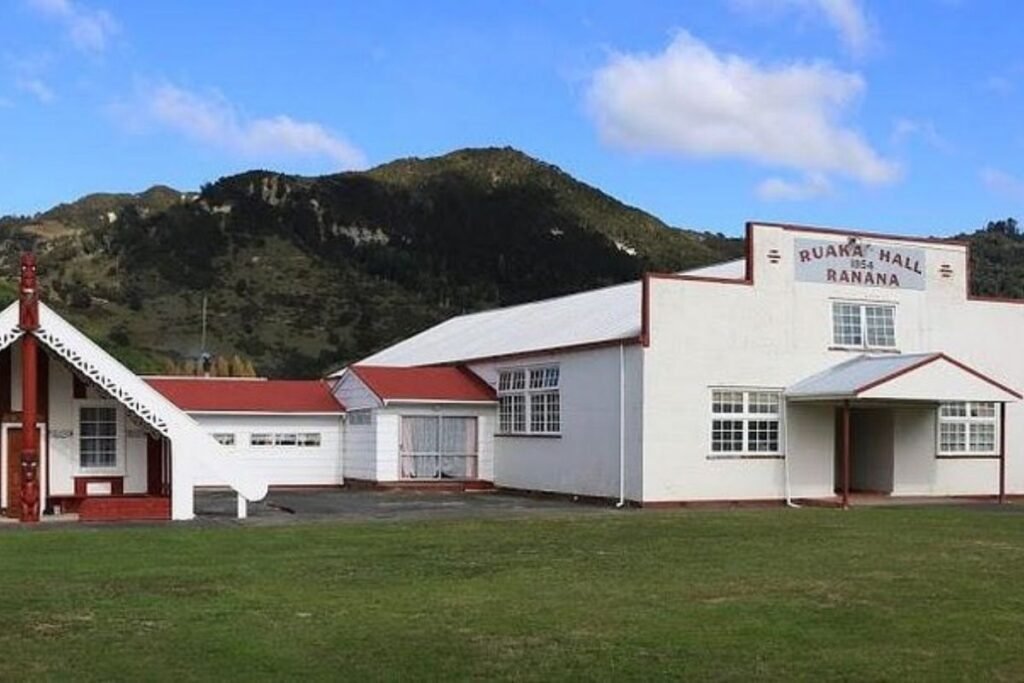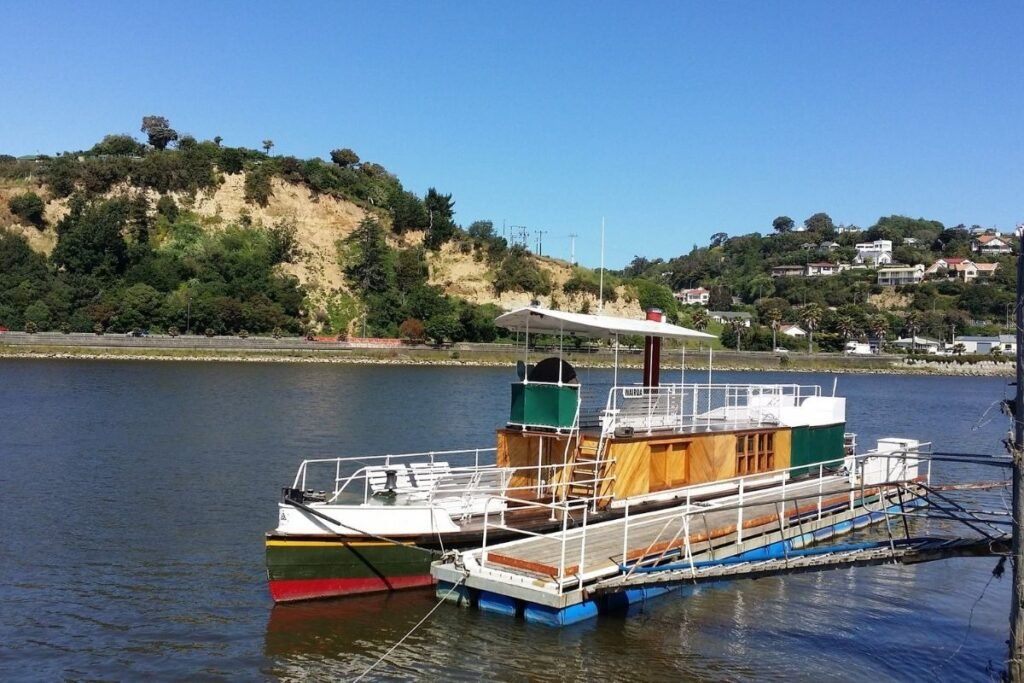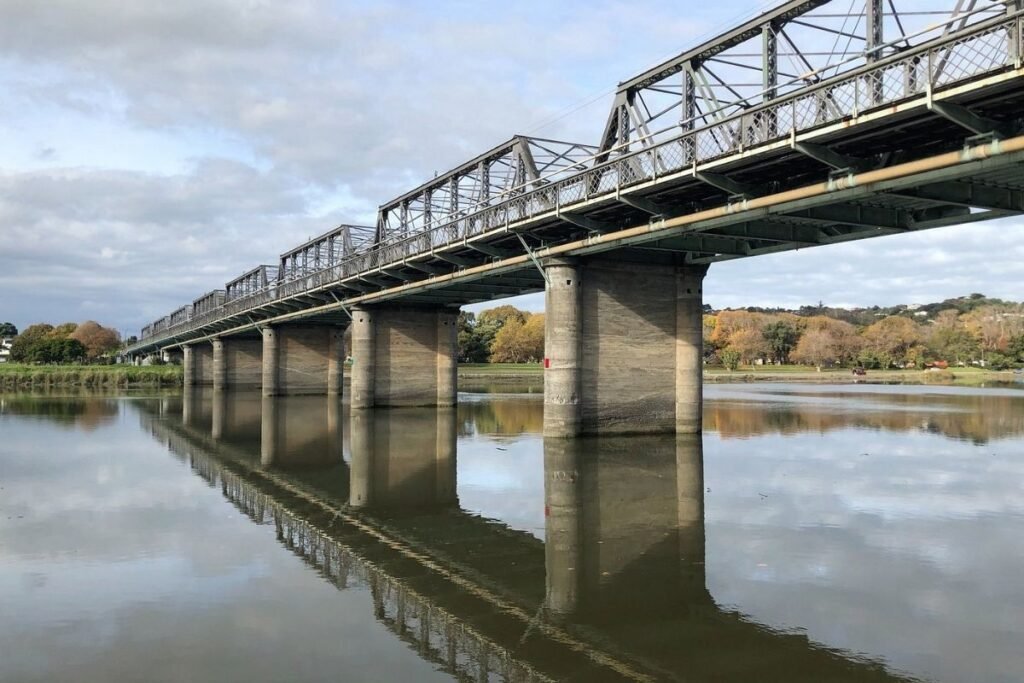
The Whanganui River is woven into Māori tradition and identity. One story tells how Mount Taranaki, fleeing Tongariro after a fierce battle, carved the deep trench that filled to become the river. Later, the great explorer Tamatea journeyed its full length, naming caves, cliffs and landmarks along the way. These stories remind us that the Whanganui River is more than water – it is whakapapa, memory and life itself.
Quick facts:
- Known as Te Awa Tupua – recognised in 2017 as a living legal person.
- The longest navigable river in Aotearoa – New Zealand.
- Flows from Mount Tongariro to the Tasman Sea at Whanganui.
🏞️ Life on the River

For centuries, the riverbanks were home to thriving Māori communities who relied on the awa for kai, transport and connection. Fertile soils made gardening plentiful, while the gentle flow allowed easy travel between villages. Later, missionaries arrived in the 1840s, introducing new practices and renaming settlements with biblical references like Atene, Ranana and Koriniti. The river became a meeting ground of cultures, trade and traditions.
🚤 Steamers and Adventure

By the late 1800s, the Whanganui River became the “Rhine of New Zealand”, drawing tourists from near and far. Paddle steamers carried wool, timber, and passengers up and down the awa. At Pipiriki, visitors stayed in grand hotels and joined scenic excursions. In its heyday, thousands travelled the river each year and life bustled along its wharves and townships.
Highlights of the steamer era:
- Over 20 steamers once operated on the river.
- Pipiriki House welcomed more than 12,000 tourists annually.
- The Whanganui River Trust was formed to keep the awa navigable.
🌿 Today’s Whanganui River

When road and rail transport took over, many river communities declined, but the awa never lost its mana. Today, the Whanganui River is celebrated as a taonga, recognised legally as an ancestor and cared for by both iwi and government. Travellers can still connect with the river through multi-day canoe trips, short kayak adventures, the historic Waimarie Paddle Steamer or riverside drives that follow its winding course.
Why it matters today:
- A sacred ancestor with personhood rights.
- A centrepiece of outdoor adventures and Great Walk journeys.
- A living reminder of how people and place are forever linked.
Final Thoughts
The Whanganui River carries legends, histories and futures in its flow. From its mythical creation to bustling steamer days, and from Māori settlements to modern journeys, it remains the lifeblood of the region. To stand on its banks or paddle its waters is to share in a story that continues to shape Aotearoa – New Zealand.
“Ko au te awa, ko te awa ko au.”
I am the river, and the river is me.